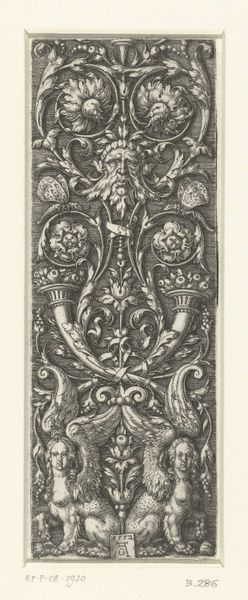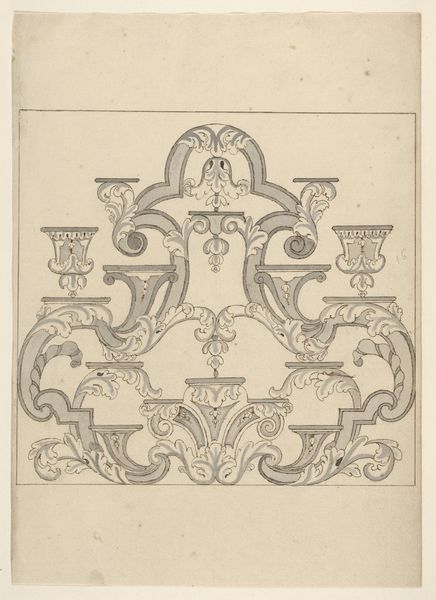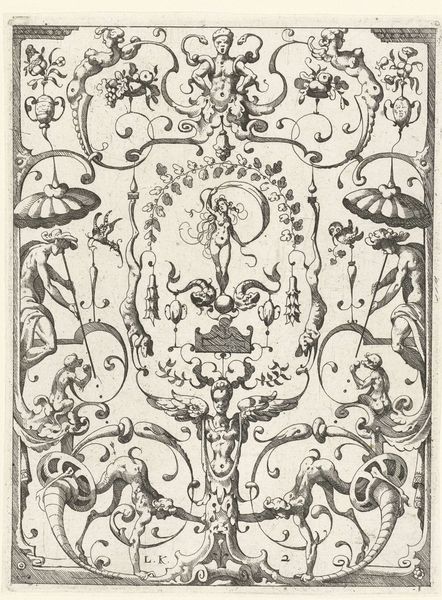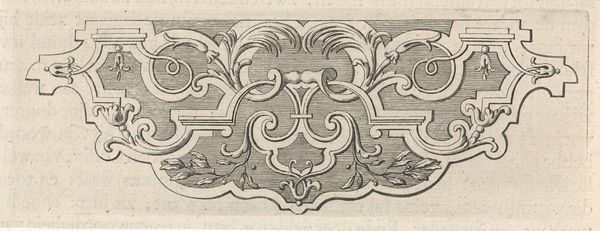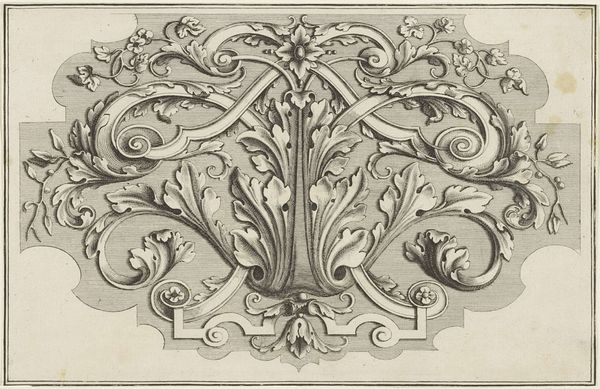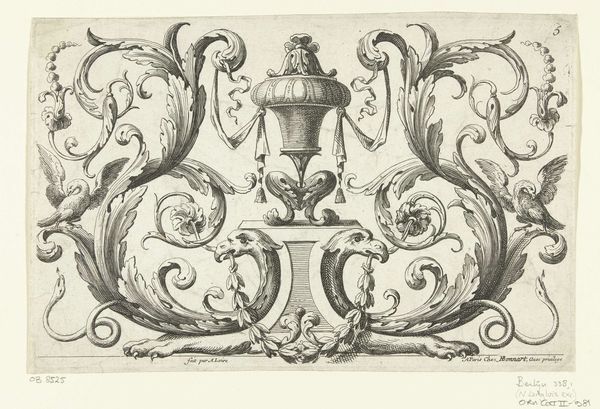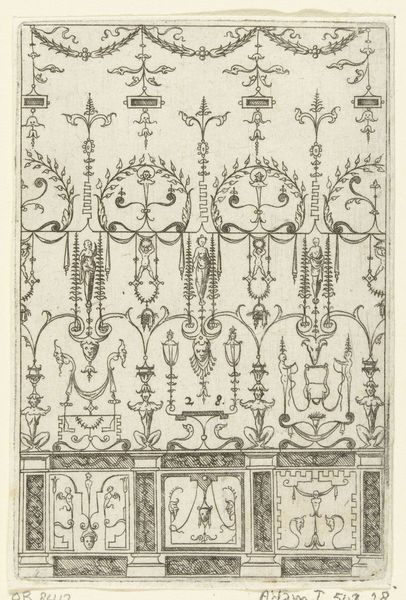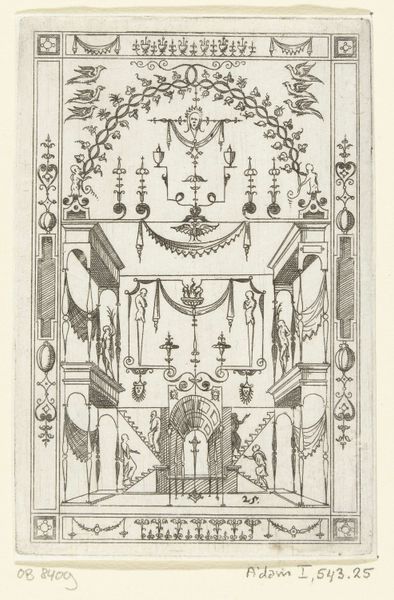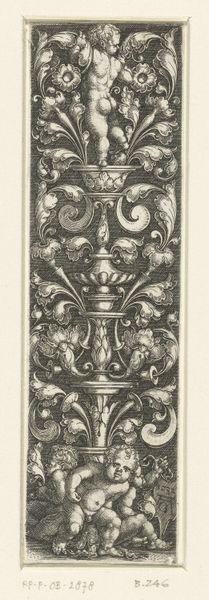
drawing, ink, engraving
#
drawing
#
baroque
#
pen drawing
#
ink
#
engraving
Dimensions: height 257 mm, width 185 mm
Copyright: Rijks Museum: Open Domain
Curator: Gerrit Visscher created this striking engraving and ink drawing sometime between 1690 and 1710, a piece titled "Vier monogrammen tussen blad- en bloemornament," translating to "Four Monograms Amidst Leaf and Floral Ornament." It really epitomizes Baroque aesthetics in its intricacy. Editor: My first impression is definitely the labor involved. The dense, detailed pen work and tight symmetry... It projects wealth and deliberate order. Are these initials connected to a particular family or purpose? Curator: Well, without specific family heraldry or inscriptions, their purpose seems more decorative, or perhaps part of a larger design piece like a bookplate or decorative print. These types of monogram designs would often appear in interior decoration, suggesting refined tastes and the power of commissioned art. Editor: Exactly! And even in that "neutral" space of decor, they’re projecting very gendered concepts of labor and taste. Note how those ornate details work to naturalize or offset power, presenting aristocracy not through blatant heraldry but domestic finesse. Are we supposed to consider that the power emanates from women as well, as curators of a sophisticated space? Curator: It's difficult to assert the active hand of a woman definitively without deeper sourcing, however we know gender and patronage profoundly shaped domestic spaces. Remember the era: Dutch prosperity empowered a broad merchant class as much as landed gentry. Editor: The image makes me wonder how seemingly innocent decorative designs like these might conceal hidden power dynamics, how the ownership and control become part of how class and race intersect. Was this emblem only accessible to wealthy people? And who printed it? Who decided where to hang it? It reflects cultural values. Curator: Absolutely, this was accessible to anyone who bought it. Visscher was a noted engraver of the era who operated from a printing shop with open doors. As for its deeper political context, its original patrons likely belonged to a more exclusive social sphere; it signals prestige to select society. Editor: Still, something about that perfect balance makes me a little uncomfortable. Perhaps it is an unsettling projection, of total control, like an armor. But now it does have me thinking about the broader implications of domestic ornamentation. Curator: It's always valuable to examine decor from an active point of view. Even seemingly "innocent" artistry like this played its role in cultural representation and power dynamics of the time. Thanks for a provoking assessment of the engraving.
Comments
No comments
Be the first to comment and join the conversation on the ultimate creative platform.


